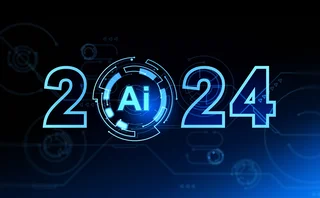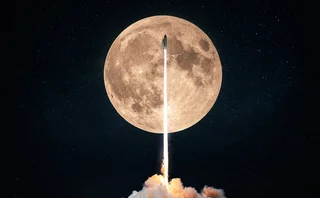Your Storage Problems, Solved, Thanks to ‘Superman Memory Crystal'
The "Superman Memory Crystal" represents a major breakthrough in the field of data storage.

For the March issue of Waters, I wrote about advancements in machine learning and how capital markets firms are trying to tap into some of the newer techniques. (The story should be posted on WatersTechnology.com next week.)
One of the main reasons why machine learning is gaining more traction is due to improved capacity for storing data. In order to run a market-timing strategy, for example, using machine-learning techniques: You need to take in a massive amount of data; you have to be able to store that data; and you have to be able to retrieve and then analyze that data.
It can be a daunting, time-consuming process that also requires a hefty price tag. But, advancements are being made. In fact, a HUGE advancement was announced just this week.
Scientists at the University of Southampton in the UK have created a five dimensional (5D) digital data recording and retrieval process using nanostructured glass. They dubbed it the "‘Superman Memory Crystal', as the glass memory has been compared to the memory crystals used in the ‘Superman' films.'"
According to the university, the storage allows for 360 TB/disc data capacity that can remain stable for 13.8 billion years at 190-degrees Celsius. "Now, major documents from human history such as Universal Declaration of Human Rights (UDHR), Newton's Opticks, Magna Carta and Kings James Bible, have been saved as digital copies that could survive the human race," according to a story published on Southampton's website.
Using femtosecond (one-one quadrillionth of a second) laser writing, the data is recorded via self-assembled nanostructures created in fused quartz, according to the institution:
The information encoding is realised in five dimensions: the size and orientation in addition to the three dimensional position of these nanostructures.
Professor Peter Kazansky, from the ORC, says: "It is thrilling to think that we have created the technology to preserve documents and information and store it in space for future generations. This technology can secure the last evidence of our civilisation: all we've learnt will not be forgotten."
Dueling For Dominance
OK, so great, this breakthrough can record the entirety of human existence. Now we can shoot this chip into outer space so that long after we've been wiped off the face of this planet, aliens can potentially read about how in 2016 Donald Trump, Bernie Sanders and Michael Bloomberg finished in a three-way tie for the presidency that resulted in the greatest quick-draw duel seen since Alexander Hamilton was done in by Aaron Burr. Fantastic.
But what about the capital markets?
Well, right now this milestone doesn't mean much of anything in the near-term, but it's certainly fun to think about and imagine the possibilities. The key takeaway here, though, is the mind-numbing rate of scientific advancement.
Consider that in 2013, which is when this technology was first introduced, researchers were able make a 300 kb digital copy of a text file and successfully record that in 5D ─ 300 kb is 0.000000279, or 3x10^7, terabytes.
When it comes to data storage, or artificial intelligence, or cosmic exploration, the rate of advancement has been incredible. That's why data scientists, quants and various types of engineers are so in demand...and expensive.
So when you hear about how revolutionary blockchain is, it's kind of amusing. Or, maybe I'm just really tired of reading and writing about distributed ledgers and bitcoin.
Only users who have a paid subscription or are part of a corporate subscription are able to print or copy content.
To access these options, along with all other subscription benefits, please contact info@waterstechnology.com or view our subscription options here: http://subscriptions.waterstechnology.com/subscribe
You are currently unable to print this content. Please contact info@waterstechnology.com to find out more.
You are currently unable to copy this content. Please contact info@waterstechnology.com to find out more.
Copyright Infopro Digital Limited. All rights reserved.
As outlined in our terms and conditions, https://www.infopro-digital.com/terms-and-conditions/subscriptions/ (point 2.4), printing is limited to a single copy.
If you would like to purchase additional rights please email info@waterstechnology.com
Copyright Infopro Digital Limited. All rights reserved.
You may share this content using our article tools. As outlined in our terms and conditions, https://www.infopro-digital.com/terms-and-conditions/subscriptions/ (clause 2.4), an Authorised User may only make one copy of the materials for their own personal use. You must also comply with the restrictions in clause 2.5.
If you would like to purchase additional rights please email info@waterstechnology.com
More on Data Management
As the ETF market grows, firms must tackle existing data complexities
Finding reliable reference data is becoming a bigger concern for investors as the ETF market continues to balloon. This led to Big xyt to partner with Trackinsight.
Artificial intelligence, like a CDO, needs to learn from its mistakes
The IMD Wrap: The value of good data professionals isn’t how many things they’ve got right, says Max Bowie, but how many things they got wrong and then fixed.
An inside look: How AI powered innovation in the capital markets in 2024
From generative AI and machine learning to more classical forms of AI, banks, asset managers, exchanges, and vendors looked to large language models, co-pilots, and other tools to drive analytics.
As US options market continued its inexorable climb, ‘plumbing’ issues persisted
Capacity concerns have lingered in the options market, but progress was made in 2024.
Data costs rose in 2024, but so did mitigation tools and strategies
Under pressure to rein in data spend at a time when prices and data usage are increasing, data managers are using a combination of established tactics and new tools to battle rising costs.
In 2025, keep reference data weird
The SEC, ESMA, CFTC and other acronyms provided the drama in reference data this year, including in crypto.
Asset manager Saratoga uses AI to accelerate Ridgeline rollout
The tech provider’s AI assistant helps clients summarize research, client interactions, report generation, as well as interact with the Ridgeline platform.
CDOs evolve from traffic cops to purveyors of rocket fuel
As firms start to recognize the inherent value of data, will CDOs—those who safeguard and control access to data—finally get the recognition they deserve?








